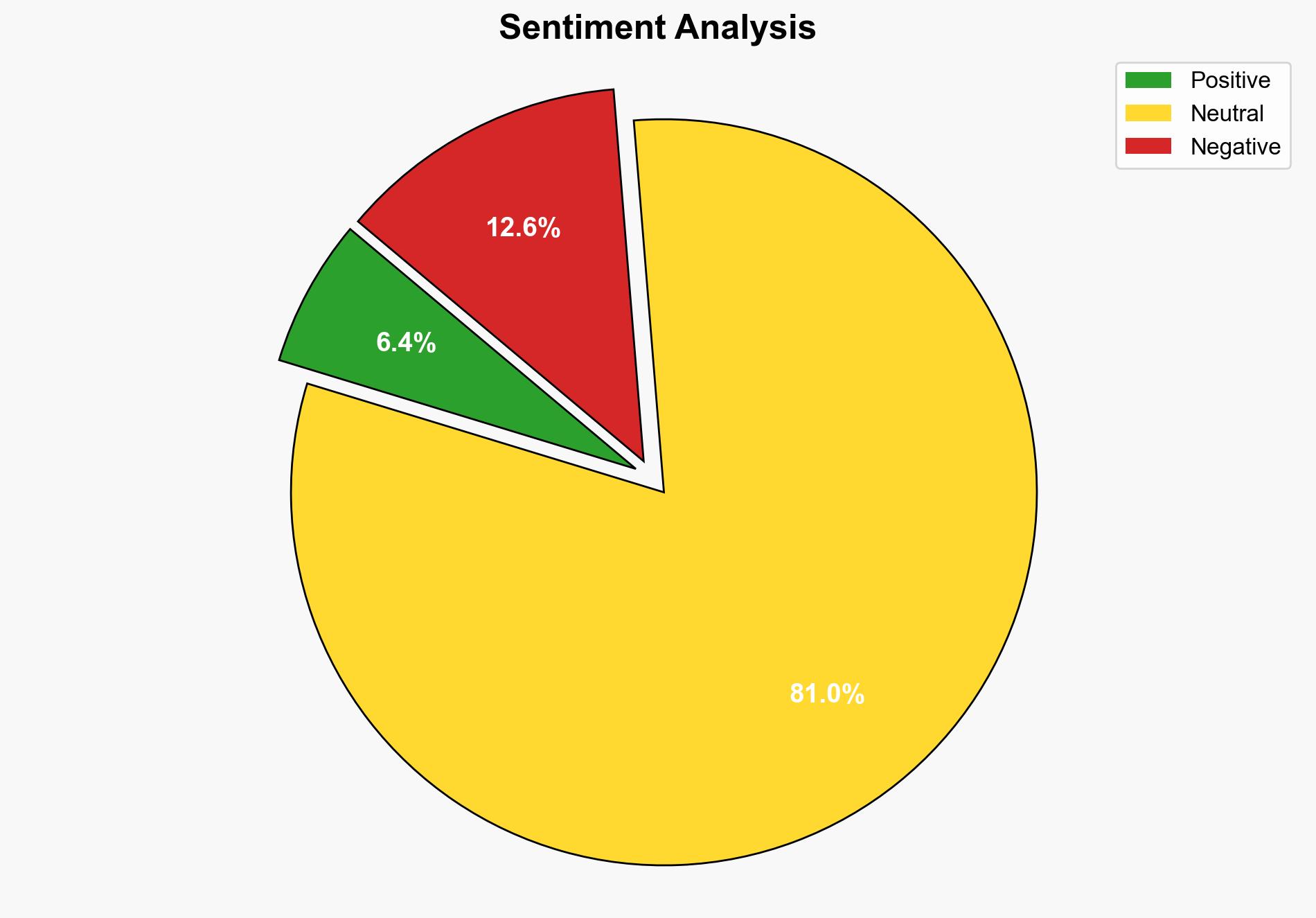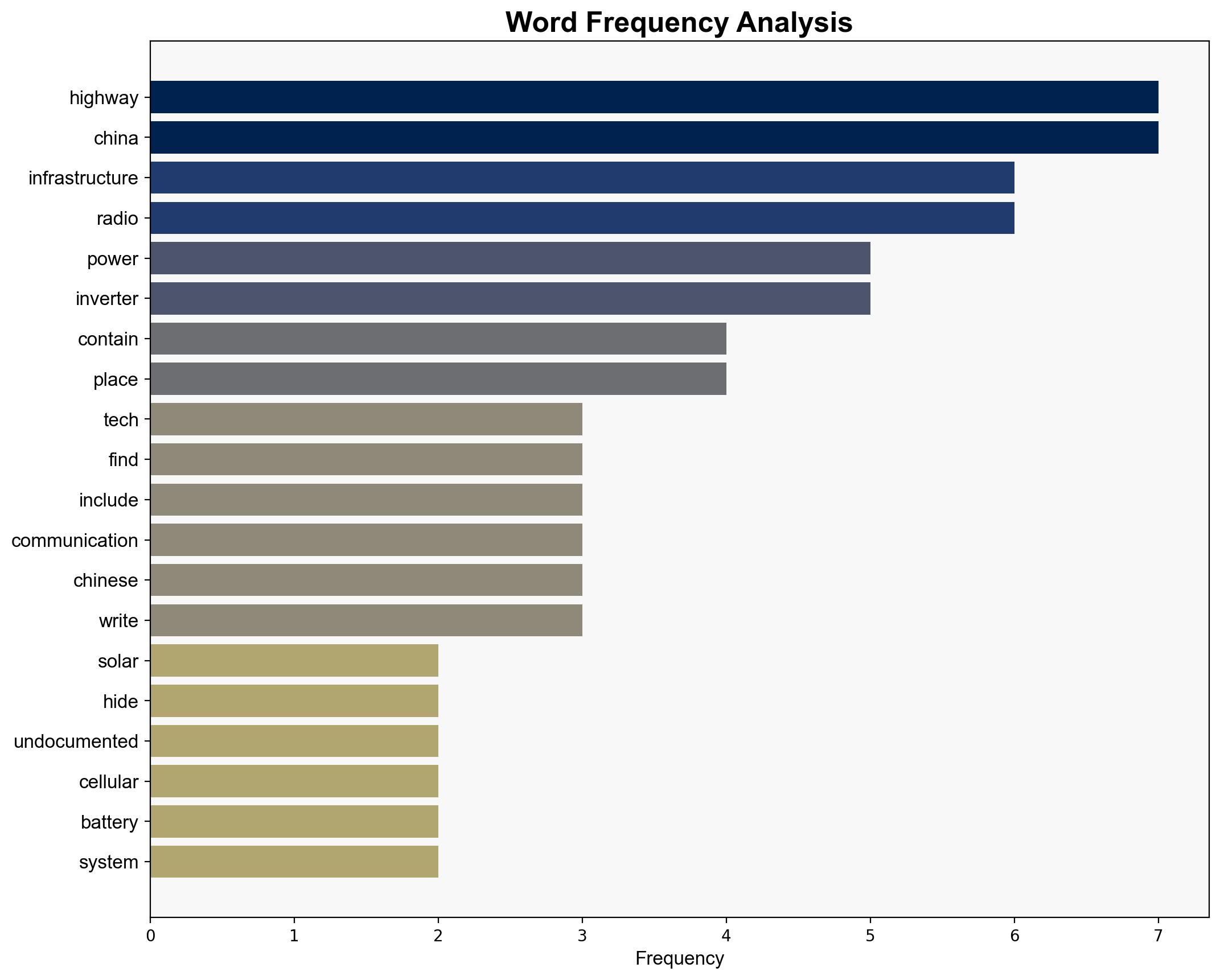US solar highway infrastructure may contain hidden malicious tech officials warn – TechRadar
Published on: 2025-09-12
Intelligence Report: US solar highway infrastructure may contain hidden malicious tech officials warn – TechRadar
1. BLUF (Bottom Line Up Front)
There is a moderate confidence level that the US solar highway infrastructure may contain hidden malicious technology, potentially installed by Chinese manufacturers. The most supported hypothesis is that these components could be used for espionage or sabotage. Recommended actions include conducting thorough inspections and audits of the infrastructure, enhancing cybersecurity measures, and engaging in diplomatic discussions with China.
2. Competing Hypotheses
Hypothesis 1: The undocumented cellular radios and power inverters in the US solar highway infrastructure are intentionally installed by Chinese manufacturers for espionage or sabotage purposes.
– **Supporting Evidence**: Historical concerns about Chinese tech companies like Huawei and ZTE; presence of undocumented components; China’s denial of wrongdoing despite past accusations.
– **Contradictory Evidence**: Lack of direct evidence linking these components to malicious activities; China’s offer of open-source code for oversight.
Hypothesis 2: The undocumented components are benign and result from poor documentation or oversight during installation, with no malicious intent.
– **Supporting Evidence**: Possibility of administrative oversight; absence of confirmed malicious activity.
– **Contradictory Evidence**: Historical context of cyber espionage concerns involving Chinese technology; potential for remote tampering and data theft.
3. Key Assumptions and Red Flags
– **Assumptions**: Hypothesis 1 assumes a deliberate strategy by China to infiltrate US infrastructure. Hypothesis 2 assumes that the installation errors are non-malicious.
– **Red Flags**: Lack of transparency in component installation; historical precedence of cyber threats from Chinese entities.
– **Blind Spots**: Potential bias against Chinese technology due to past incidents; insufficient technical analysis of the components.
4. Implications and Strategic Risks
– **Economic**: Potential costs associated with replacing or securing compromised infrastructure.
– **Cyber**: Increased vulnerability to cyber-attacks if malicious components are active.
– **Geopolitical**: Strained US-China relations, impacting trade and diplomatic engagements.
– **Psychological**: Public concern over infrastructure security and trust in foreign technology.
5. Recommendations and Outlook
- Conduct comprehensive audits and technical analyses of all suspect components.
- Enhance cybersecurity protocols and infrastructure monitoring systems.
- Engage in diplomatic talks with China to address and resolve these concerns.
- Scenario Projections:
- Best Case: Components are found to be benign, and relations with China improve through transparency.
- Worst Case: Confirmed espionage leads to significant diplomatic fallout and economic sanctions.
- Most Likely: Increased scrutiny and regulatory measures on foreign technology in critical infrastructure.
6. Key Individuals and Entities
– Chinese Embassy in Washington
– Federal Highway Administration
– Department of Transportation
7. Thematic Tags
national security threats, cybersecurity, counter-terrorism, regional focus





